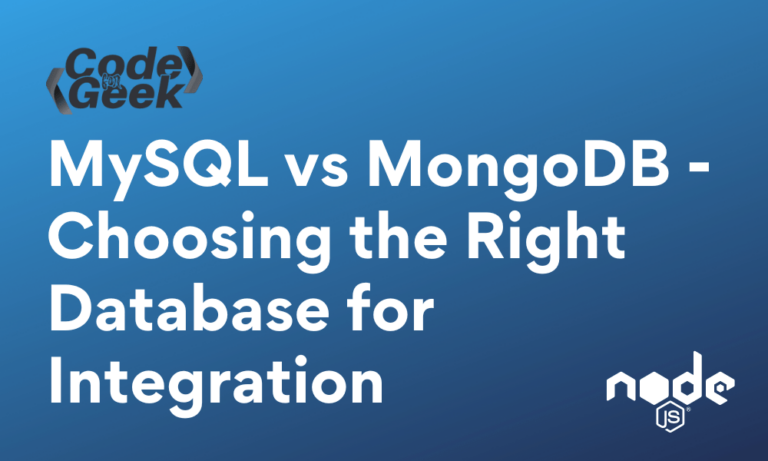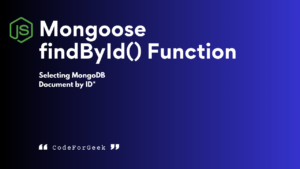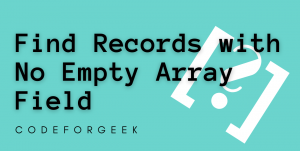In the ever-evolving world of data storage, deciding on the right database for your applications performs an important role in making sure efficiency, productiveness and protection.
The cause of this article is to offer a complete evaluation of MongoDB and MySQL, broadly used database frameworks, that will help you make a knowledgeable choice. We shall delve into their strengths, weaknesses, user-friendliness, scalability, performance, flexibility, and security and explore the popular use cases for both. Let us embark on this journey.
MongoDB – Advantages, Disadvantages, and Use Cases
MongoDB is a popular NoSQL database management system that is popular for its document-orientated approach. It stores records in flexible, JSON-like documents, permitting developers to work with unstructured or semi-structured statistics effectively. Unlike conventional relational databases, MongoDB does not implement a fixed schema, permitting easy amendment and addition of fields inside documents.
Advantages of MongoDB:
- Adaptable records version: MongoDB’s NoSQL nature lets in the storage of unstructured and semi-based information, rendering it perfect for tasks with ever-converting demands.
- Horizontal scalability: MongoDB’s inherent sharding capabilities facilitate seamless distribution of data across multiple servers, ensuring heightened availability and performance.
- Native support for geospatial data: Well-suited for location-based applications and geospatial queries.
- JSON-like documents: Developer-friendly and particularly suited for JavaScript-based applications.
Disadvantages of MongoDB:
- Lack of transactions: MongoDB’s design emphasizes scalability, leading to the sacrifice of support for ACID (Atomicity, Consistency, Isolation, Durability) transactions in certain cases.
- Limited JOIN operations: MongoDB’s NoSQL approach restricts the ability to perform complex JOINs as efficiently as traditional relational databases.
Use Cases of MongoDB:
- Content Management Systems: MongoDB’s flexibility accommodates rapidly changing content structures in CMS applications.
- Real-time Analytics: Ideal for applications that demand the processing of high-velocity data streams, such as social media analytics.
- Internet of Things (IoT): MongoDB’s capability to handle considerable quantities of unstructured IoT data and geospatial queries makes it a pinnacle desire for IoT facts control.
MySQL – Advantages, Disadvantages, and Use Cases
MySQL is a well-known and most-used relational database management system (RDBMS) which hold a prestige place in the digital world for many years. It is famous for its robustness, reliability, and versatility making it a desired preference for endless applications and projects in diverse industries. MySQL follows the relational model, organizing data into tables with predefined schemas, which allows for efficient querying and control of structured data. It ensures statistics integrity through ACID (Atomicity, Consistency, Isolation, Durability) compliance, making sure reliable transaction processing.
Advantages of MySQL:
- Maturity and well-established status: MySQL has been a go-to relational database for decades, boasting a robust ecosystem and community support.
- ACID-compliance: Ensures data integrity and consistency in mission-critical applications that require transactions.
- Advanced query optimization: Optimizer and caching mechanisms help enhance query performance.
Disadvantages of MySQL:
- Vertical scaling limitations: Scaling MySQL on a single server can be challenging beyond a certain point.
- Fixed schema: Rigidity in schema design can be a constraint for projects with evolving data requirements.
- Limited support for unstructured data: Not as suitable for projects that require handling diverse data formats.
Use Cases of MySQL:
- Financial Applications: ACID compliance ensures data accuracy and consistency in financial transactions.
- E-commerce Platforms: Well-suited for online stores with structured data and complex queries.
- Business Intelligence: MySQL’s powerful query optimization supports complex reporting and analytics.
MongoDB vs MySQL: Understanding the Differences
Let us now look at each aspect of both databases one by one and find out which database is best for your next project.
Ease of Use
Setting up MongoDB and MySQL is relatively straightforward, with intuitive installation procedures for both. MongoDB’s document-oriented approach may be more familiar to developers with a background in JavaScript, whereas MySQL’s relational model is well-suited for those accustomed to traditional databases.
Learning Curve
The learning curve for developers and administrators can vary between MySQL and MongoDB because of their distinct facts models and query languages. Here’s a comparison of the learning curves for each:
MySQL:
- SQL Knowledge: Developers working with MySQL need to be proficient in SQL (Structured Query Language) for data manipulation and querying. SQL is a mature and broadly used language, making it enormously less complicated for developers who’re familiar with SQL or have experience running with relational databases.
- Schema and Relationships: MySQL follows a fixed schema with structured tables and relationships between them. Developers need to understand and outline the schema before operating with the data, which can be straightforward for applications with well-defined data structures.
- Configuration and Optimization: MySQL has a variety of configuration options and tuning parameters that administrators need to understand to optimize database performance. Learning to fine-tune these settings may require some experience and experimentation.
MongoDB:
- JSON-like Documents: MongoDB uses a document-based model with flexible schemas, and data is stored in BSON (Binary JSON) format. Developers need to understand and outline the schema before operating with the data, which can be straightforward for applications with well-defined data structures.
- Query Language: MongoDB’s query language isn’t the same as SQL, and developers have to observe MongoDB’s query syntax and its unique skills, like filtering, sorting, and aggregation the usage of the MongoDB Query Language (MQL).
- Sharding and Replication: MongoDB’s distributed nature allows for sharding (horizontal partitioning) and replication (for fault tolerance and high availability). Administrators need to learn how to set up and manage sharded clusters and replica sets.
Scalability
MongoDB excels in horizontal scaling, thanks to its native sharding capabilities, enabling the seamless distribution of data across multiple servers. In contrast, MySQL’s strength lies in vertical scaling, making the most of powerful hardware configurations.
MongoDB’s sharding allows it to handle massive amounts of data and accommodate a high number of concurrent users. However, as data volume grows, proper hardware planning and sharding configuration become crucial. MySQL’s vertical scaling can handle increasing data volumes to a certain extent, but at some point, it may require complex partitioning and optimization to maintain performance.
Performance
Performance testing must be done for particular use cases, as MongoDB might also outperform MySQL in certain eventualities, whilst the opposite side could be true for others. Conducting thorough benchmarks is essential to making facts-driven selections
Both databases provide indexing, caching, and optimization capabilities, however, their implementation may additionally fluctuate. MongoDB’s compound indexing can extensively enhance query overall performance, the same time as MySQL’s advanced question optimizer presents diverse techniques for optimization.
Flexibility
MongoDB’s flexible schema allows developers to work with varying statistics structures, making it a compelling desire for projects with evolving necessities. On the alternative hand, MySQL’s fixed schema affords facts integrity and consistency.
Schema adjustments in MongoDB are seamless because of their schema-less nature, while MySQL requires cautious making of changes and migration techniques whilst altering the schema. MongoDB’s flexibility is probably tremendous at some point in the early levels of development but could cause data inconsistency if not treated efficiently.
Security
Both MongoDB and MySQL offer strong security mechanisms, including user authentication, role-based access control, and encryption. Regular updates and adhering to great safety practices are important for retaining a steady database environment.
MongoDB and MySQL offer comparable authentication and authorization mechanisms, requiring users to have suitable privileges to access particular data. Additionally, each database support encryption to protect sensitive information
Also Read: Top 10 Node.js Security Best Practices: Protecting Your Application
Querying Data
MongoDB’s BSON (Binary JSON) queries are greater expressive and easier to apprehend for developers familiar with JSON. MySQL’s SQL queries, on the other hand, are well-established and highly optimized for relational records operations.
Complex queries in MongoDB may be greater straightforward for developers due to its native support for nested documents and arrays. However, MySQL excels in complex JOIN operations, making it extra suitable for intricate statistics relationships.
MySQL offers robust support for JOIN operations and complex data aggregations, while MongoDB’s strengths lie in geospatial queries and working with nested data structures.
Replication
Both MongoDB and MySQL support sharding and replication to beautify scalability and fault tolerance. Sharding distributes data across multiple servers, while replication provides data redundancy for improved availability.
MongoDB’s native sharding capabilities make horizontal scaling more manageable, enhancing fault tolerance through data distribution. In contrast, MySQL’s replication ensures data redundancy and availability, and combined with load balancing, it can achieve a high level of scalability.
Read More: https://www.mongodb.com/features/database-sharding-explained
Conclusion
By gaining knowledge about the nature of your project and the information provided in this article now you can get better insights to use databases MongoDB and MySQL. Utilize information about many features provided earlier to assess the differences and determine which DBMS aligns best with your database integration requirements.
Remember, both MySQL and MongoDB have their strengths and weaknesses, so thorough evaluation and checking are vital. Consult the official documentation and seek expert advice to ensure the optimal choice for your application’s database management needs.





